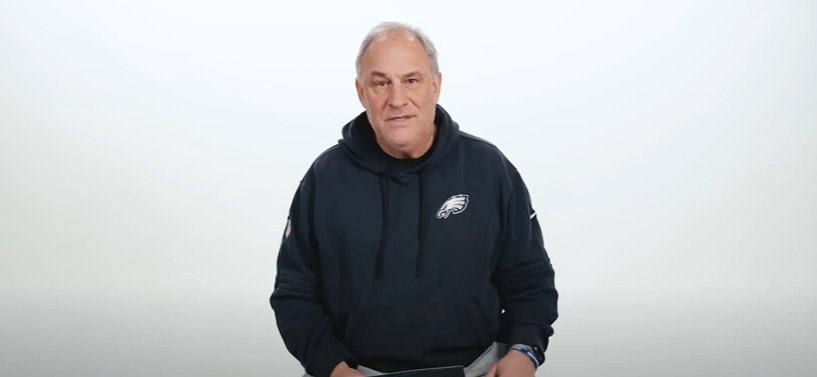In 2025, Vic Fangio is producing masterpieces worth millions of dollars, not just defensive strategies. He is now the highest-paid defensive coordinator in the NFL after receiving $4.5 million from the Philadelphia Eagles. This is not just a coincidence; it is a reflection of Fangio’s tremendous impact on the defensive side of the game. By leading the Eagles to Super Bowl LIX, he significantly contributed to the defense masterminds’ increased visibility. As a result of Fangio’s achievements, coaching ability is now valued in the NFL just as much as player skill. By integrating movie evaluation, analytics, and emotional strategies, he and other defensive coordinators have progressed from assisting quarterbacks and coaches to leading dominant defensive units that outsmart most of the league’s most formidable offenses.
It is clear from looking at salaries across the league that defense is becoming more and more crucial. In recent years, defensive coordinators have seen a sharp rise in pay. Steve Spagnuolo of the Kansas City Chiefs, who earns $3.5 million, is another illustration of how defensive minds are taking over the NFL. He came up with a plan in Super Bowl LV that successfully stopped one of the strongest offenses ever. This shift affects more than just top players like Fangio and Spagnuolo; according to Front Office Sports and ProFootballNetwork, all ten of the top coordinators now earn at least $1 million annually. Because even coaches at lower pay levels are making six figures, the way defense is viewed in today’s game has changed significantly. The NFL is now a chessboard where the best strategists are rewarded for their strategic skills, rather than a showcase for gaudy offensive stars.

This pay raise represents a shift in culture in addition to being a significant financial increase. In the multibillion-dollar world of American football, defensive coordinators have traditionally been somewhat of an afterthought. They are now in the spotlight. Their increased pay reflects their increased prominence as key players in their teams’ success. Millions of fans can examine defensive coordinators like Spagnuolo and Fangio’s game plans as plot points because they are frequently featured in highlights and analysis segments. Whether it’s Fangio’s meticulous breakdowns or Spagnuolo’s third-down blitz packages, their calls aren’t just discussed; they’re praised. Their influence on popular football culture is so strong that their work is regularly analyzed on YouTube, talked about on ESPN, and even turned into a meme on Twitter.
As defensive coordinators gain popularity, they are also shaping the future of the game by mentoring the next generation of players. Fangio excels at developing new talent in particular. His work with offensive rookies like Cooper DeJean, who made a game-winning interception during a pivotal playoff moment, demonstrates his ability to develop players’ potential. Through careful game plans and one-on-one coaching, Fangio and other secondary experts are not only teaching players the basics of defense but also molding them into high-impact stars. These coaches’ current compensation reflects their growing influence over the development of upcoming players and the strategy of the game.
The United States is not alone in this shift in recognition. Take British-born Aden Durde, the defensive coordinator for the Seattle Seahawks. In addition to representing the NFL’s emerging coaching talent, Durde, who is paid $2 million, acts as a bridge between American and international football. His journey from the UK to the NFL is a striking example of how football’s tactical landscape is changing around the world. Even though coaching salaries in the UK’s professional leagues still average around $35,000 annually, Durde is proving that even foreign coaching talent is now highly valued in American football. The conversation about European football, where managers are often treated with less regard than their American counterparts, is being advanced by his accomplishments.
The emergence of defensive coordinators is also accompanied by a fresh round of public criticism. Thanks to social media platforms like TikTok and X (formerly Twitter), fans can now more readily examine and comment on defensive strategies. As games become more data-driven, “All-22” movie analyses have turned even casual viewers into armchair coaches who are studying every defensive tactic with almost obsessive fervor. Because of this increased accessibility, coordinators are no longer just anonymous people operating in the background; they have become recognized individuals in their own right. Some are even starting to gain notoriety due to social media posts and memes that are devoted to their strategies, deeds, and decisions.
